Being owned by a BeagleThe biggest "pitfall" we find when speaking with Beagle owners that approach us is that there is this limbo between old school beliefs vs having experienced "something different". We were there as well and the Beagles taught is very quickly that they are different. And no, we have also not been able to give a definitive answer as to why they are different (to those looking for the answer to that question) and no (to those saying "oh, just like any dog") they are not. It's not Beagle snobbery at play when a Beagle owner tells you it's different being a Beagle parent, it - just - is. The closest thing we have come to be able to try and explain it is: "It's like raising a highly intelligent, curious (& very hungry) 5 year old"The unspoken languageBody language. It has been touted for a while by behaviourists and trainers, there are many many articles, blogs and books on it. We won't get into those nitty gritty's right now for various reasons. The reason for this blog post is to make you aware of the importance of it. Most people have heard of it but it has become a buzz phrase of sorts. We expect our dogs to listen to us, shouts, calls, whistles, towering over them when angry, to know the difference between us being happy and frustrated, the list goes on. But how much time do we take to understand them, how they think, why they do things. How much do we ASSUME about their behaviour (prime example: "I know he knows he did something wrong because he looks guilty when I scold him")
Understanding your BeagleI will get to points 1-3 in other posts. This one is about the importance of understanding your dog. Again, I'm not going to be telling you here how to understand your dog for the moment. We want to hit home how important this is. You may think you understand your dog but still run into issues. So I would like to list for you the biggest (human) issues we run into when consulting, do you recognise any of these being your problem? Ego Yip, I start with the hardest one for people to hear. It actually goes hand in hand with point 1. Mindset change. We find that people battle most with their ego when they need to change their mindset. Various things such as preconceived ideas, how they grew up, cultural beliefs, things seen on television, old belief systems all affect this as changing a mindset usually means facing these things were incorrect (and who wants to admit what they've believed/practiced is incorrect and possibly even caused the unwanted behaviour?) We have walked a path with many people where the path of changing unwanted behaviour ends up being a bigger journey of self awareness (more about that another time), for this the ego needs to be dropped. Ignorance Despite all the information "out there" many people have not educated themselves in the many new and more constructive ways of training and understanding their dogs. Many people still have not done their research on the breed they are getting (though this is definitely changing thankfully). Sometime the research hasn't been done just because they did not bother but very often we find it is because people are simply overwhelmed by the information and sometimes very contradictory or very generalised information, so they shut off and stop looking. Stubbornness Kicks in with ego. They dig in their heels because "it's a dog and needs to do what it's told". In my experience as an animal behaviourist the Beagle breed is one of the ones where I see this human mindset backfire most often. They will compromise but very often will not submit completely. Laziness I've mentioned it before and I'll mention it again. There is work that needs to be done if you want to change a behaviour. At times that means simply working on your relationship with your Beagle. Other times (depending on the behaviour and the severity) it can take weeks, months, even years to change it. Impatience We tend to stick our own expectations of timelines regarding behavioural changes (often without being willing to put in the work or compromise needed). Just because they are dogs it does not mean they can simply change at the snap of your fingers. Think about it, how long does it take for you to break that bad habit? Know how to listenIf you can take one thing away from this post we implore you, educate yourself. Understand how your dog thinks and why, not with books and articles (that can come)....
Step back and let go of all your preconceived notions and sit quietly with them and observe and interact. Watch them, see how they think, don't make assumptions. Look at them with fresh eyes and TELL them you want to understand them and their way of speaking when they look at you with that Beagle head tilt quizzically. Let us know what you observe, we'd love to hear it.
1 Comment
On Tuesday 13 October 2020 we were told that Bailey's cancer had spread to his liver and that he is unlikely to make it to 30 days. 11pm, Saturday 30 May 2020 I am on the couch next to the bed. I hear Bailey get off the bed for water. The only light is the computer light but I see him come back and him jump on the bed. Next thing he walks over to me and just leans against me. It is not completely out of character but unlike him to do so at this time of night. He doesn't lay down and he's not shutting his eyes. Something feels wrong. I get up and switch on the light and his eyes seem a little out of it. When I say his name his eyes move a little but he doesn't look at me. I check his gums - pale. Having gone through what we did last year with Fudge and Solomon I call the vet. It's now 11:15 pm. In the van we get. They draw blood and he is anaemic, the very basic scan they are able to do indicates something is bleeding inside, but an ultrasound is needed. I ask for Cyklokapron to get him through a few days (despite how urgent this may seem, one still has to wait for availability of a specialist vet to do an ultrasound). 8am, Sunday 31 May 2020 I start calling around, nothing until the following Friday and then a miracle. There is a cancellation and I can take him to our first choice animal hospital first thing the next morning. 8am,Monday 1 June 2020 Bailey gets taken in for the ultrasound. A tumour on his spleen had bled. They could not see active bleeding on the scan, but they suggest removing his spleen - one of the vets there have offered to do the surgery straight away. They had him prepped and ready for surgery before I left. I got to see his vet (Dr Barry) who runs the holistic practice within the same medical centre before I left and he promised to have a look at Bailey after his surgery and start him on treatment. On Sunday we had already made the decision that should this be cancer we will treat this holistically and not go the chemotherapy route. The vet calls after surgery. Everything went well. He could not see any physical signs of tumours on any of Bailey's other organs. He asked if we would like it sent away for testing which we did. Tuesday 2 June 2020 I go fetch Bailey. He comes bouncing out when the vet brings him. Bright eyed and bushy tailed. His vet has started him on Vitamin C treatment and some other remedies - discussed here. He needed to be back in 7 days. The vet that performed the operation comes in and gives me pain medication for Bailey. He has lost 1.5 kilos. On the way back home, having learned from my 10 days with Solomon last year, I stop and get a selection of different tinned dog foods (premium to standard), fresh liver and hake. as well as some sausage, liver paste and cottage cheese. Many of these go totally against my grain on feeding, however there are times where desperate times call for desperate measures and history taught me to be prepared. I e-mailed Kate McDowell from McDowell's herbal. She helped us with Fudge last year and we value her input greatly. I ordered two sets of her Hemangiosarcoma (as this is what my gut as well as Dr Barry's gut said it is likely to be) pack and started with some of her suggestions as well. Summary of next 4 and a half months The cancer specialist called back 3 weeks after Bailey's operation. Being lock down I think everything was a bit muddled. I had already received the results of the splenectomy 2 weeks before from Dr Barry and knew what it was. It is important to note here that should you decide to take the chemo route that that should have started pretty much within days of the spleen being removed. For various reasons we decided not to go this route, one of the main ones being Bailey's age. OK, so you're wondering what it is? The results came back that the cancer is malignant and that it is Hemangiosarcoma. The feedback from the two vets: Cancer Specialist He recommended chemo therapy and that it needed to be started right away (this is already 3 weeks down the line, so the "right away" window had actually already closed, but I did not pick him up on this). He said it would be every 3 weeks, 5 treatments. Life expectancy without chemo 40 - 80 days. With chemo "maybe 6 months". Homeopathic specialist - Dr Barry "Let's not focus on average life expectancies. Let's focus on giving Bailey the best quality of life as long as possible. What I can tell you is that I have patients in the same boat as Bailey and at least one of them has been going for almost 4 years. So you never know, We take it a day at a time" So Bailey was going for his Vitamin C treatment first once a week, then every 10 days, then every 14 days and then every 21 days. He was doing incredibly well, no signs of being a sick dog. His gums were consistently a healthy pink and he was just his happy, healthy self. 6:30am, Saturday 10 October Bailey doesn't bounce off the couch as he normally does for breakfast. His eyes are following me but he's not even lifting his head. Check his gums - very very light pink. When I am done dishing up their food Bailey does get off the couch but he just sniffs his food, seems interested in eating but doesn't eat. Then he lays down. His gums are even lighter by 7:30am. I get him in the van and take him to the vet. Luckily the vet that performed his surgery is at the hospital. He does a basic scan and says there is another bleed, it looks at though it may be his liver. He says that I need to ready myself that it's possible he may have only days left. I ask for Cyklokapron to help with the bleeding and bring Bailey home. By that afternoon his colour is back, his appetite is back and he is clearly feeling better. I message Dr Barry who says he will see if he has a space available to see him Monday and get an appointment for an ultrasound for Monday 19 October 2020. Monday 12 October 2020 Bailey has a "booster session" with Dr Barry. We go back to treatments every 14 days. Whilst I'm paying I remind the receptionist that should there be any cancellations for the ultrasound I can shoot through at the drop of a hat. She informs me that a slot had just opened up for the following day. Tuesday 13 October 2020 Bailey's ultrasound reveals that the cancer has spread to his liver. There is one very large lesion of about 3cm and at least 6 other smaller ones. He is put on 5mg Prednisone tablet in the morning and continue with 1/2 tablet Cyklokapron twice a day. The vet gave 30 prednisone tablets with the words "...though I doubt he will make it 30 days, I'm sorry" Wednesday 14 October - Friday 23 October 2020 Dear Bailey has a great two weeks. His gum colour is pink, not quite as pink as his "old normal", but still a healthy pink and stays consistent. I'm feeding him 6 meals a day. His two main meals are smaller and then 4 "snack" meals during the course of the day. More about his meals here. He seems to get hot flashes about every other day lasting from 4;30pm - 6;30pm. Apparently hot flashes are a possible side effect from the Prednisone. At his appointment on 23 October with Dr Barry he has regained 1kg of his pre-cancer weight, so just 0.5kg away from being back to his normal, healthy weight. 3pm, Saturday 24 October 2020 Bailey sniffs at his dinner but does not want to eat. When I put his tablets in liver paste he happily takes that so I try some cooked liver which he eats and then I open a tin of food and he has a few bites of that. he is quite pale - pinkish white more so than whitish pink. By 7pm he is really hungry and asking for his normal food which I gave him. His colour was more pink. Sunday 25 October 2020 Bailey is behaving his normal self, his appetite is back to normal but his colour is still pale and fluctuating between very light pink to slightly light pink. His abdomen is quite distended. Monday 26 October to Thursday 12 November 2020 Bailey has an amazing 2 weeks. by Tuesday 27 October his colour is back to bright "old normal" pink and he is bright eyed and bushy tailed and even chasing squirrels. He is still getting his 6 broken down meals a day. HIs hot flashes are every evening. By Wednesday 28 October his abdomen is back to normal (which means his body has sufficiently re-absorbed the blood). His colour stays consistently dark pink and he is a bouncy, happy boy. 7am, Friday 13 November 2020 Today marks 30 days since the vet said to hope that he has another 30 days left would be optimistic. 3 weeks ago I made an appointment for a follow up ultrasound "just in case" he did make it this far". I woke up to Bailey being quite weak and again, not excited for his food. His gums are very pale pink. 45 minutes later his gums are almost white and he keeps laying down. We leave for the ultrasound appointment. He very slowly walks into the vet's office but then after the catch up he lays down and he needs to be carried in for the scan. Afterwards he has to be carried out. The news isn't great. The one large lesion has almost doubled in size and his liver is now absolutely riddled with cancer. There is an active bleed happening. The cancer does not appear to have spread to other organs. Today was the most difficult day so far. His body went into shock twice and having been with both Solomon and Fudge when they took their last breath (neither euthanised) I thought this was the end. Eyes fixated on nothing, breathing going from very shallow to so slow I can hardly tell he's breathing and ice cold pads, ears and lips. He hardly moved all day and I had to push his medication down his throat. Because he wouldn't eat I picked up some Virbac Nutribound and was squirting little bits of that down his throat with a syringe every hour and little bits of water (mixed with some other things) every 40 minutes. A more detailed account of what happened during the course of the day here. By the evening he was lifting his head when I was walking around, interested in what I was doing. The sparkle returned to his eyes and his white gums had gained some pink colour. He was eager to have some liver and heart. His abdomen is very distended and relatively hard. Saturday 14 November 2020 Bailey slept through the night, he did not move much, never got off the couch (we have been sleeping together on the couch as it is lower and he can climb on and off as opposed to jumping on and off the bad and also I can protect him from the other dogs should he not want any of them close). He got up and came for his breakfast, he seemed very hungry but only gave a few licks of the raw food. He wanted tinned food and liver. So I gave him very small bits smooshed with Nutribound every 30 minutes. After about the 4th time he no longer wanted anything with Nutribound and he wanted some of his raw food. His colour gradually got better throughout the day. He was a bit tired but every time I went to the fridge he leapt off the couch and came running. He was clearly feeling better. By the evening his colour was back to bright pink and he was ready to cuddle up with mom. Sunday 15 November (the day I am writing this post) Bailey is back to himself. His abdomen is a little distended but not what I expected it to be, actually closer to normal. He didn't quite finish his whole breakfast so I'm going to be making his meals smaller and do 8 smaller ones throughout the day. I believe that all the medication and supplements may be affecting the taste so I am going to split them into giving them to him in 3 smaller breakfasts so there isn't so much he has to take in in one go. For those that have read thus far and purely want a summary or some sort of checklist - see below. For those that are interested in the smaller details of daily routines, feeding, supplements and a more holistic approach, please feel free to join us on the rest of the journey here. In Summary (for other cancers these could be slightly different, this is in my experience dealing with Hemangiosarcoma of the Pancreas and Spleen and spreading to the liver) Tips: Get intimate with your dog's gums. Seriously I cannot stress this enough. KNOW your dogs gums because when the day comes where it's important and the advice or question to you is "check his gums" or "how does his gums compare to normal?" - you need to know what "normal" is. Don't think that it's something you can compare to your other dog or dogs either. One's normal is another's pale. Just a quick flip up of the lip and take a glance and store it in your memory bank. Ask questions My experience has been that there is a lot of talk of ruptured tumours, bleeding and such but the general vets seem to stay away from the word cancer and no one ever mentioned "Hemangiosarcoma" (both this time with Bailey and with Solomon). If your dog's gums are pale and you're concerned - Questions to ask (this is before you get to see a specialist/get an ultrasound done and for the general vet): - Ask that they do a basic blood test - Ask for a basic scan to see whether there is a bleed - If there is a bleed and they won't be able to assist with an ultrasound that same day ask for pain medication and Cyklokapron (or something similar, Tranic is the generic equivalent) that can help to get you through the days until the ultrasound can be done. Cyklokapron is a man-made form of an amino acid called lysine. It is used to prevent bleeding. TAKE NOTE At this stage a basic scan cannot show the vet much. At best usually they can only tell whether there may be a bleed or not. They usually cannot tell where the bleed is or whether it is actively bleeding. The blood test can indicate to them how some of the organs are coping and whether the body is producing red blood cells to replenish what is being lost. It also gives them an indication of the platelet count. Platelets help the blood prevent excessive bleeding. If your dog is very low on platelets they may suggest a blood transfusion to introduce fresh platelets - this was our experience in Solomon's case. Ask more questions These are for when/if you see the specialist that did the ultrasound. - Where is the bleed? - Can it be removed? (with Hermangiosarcoma these what I no call "initial bleeds" usually are from tumours on the spleen, sometimes pancreas and then less often the other organs, if in the spleen or pancreas then often those two organs can be removed in order to stop the bleeding). I have not had experience with it being on the other organs so I will refrain from commenting on those. I do know that if on the heart especially it is quite a different kettle of fish. - Can you see any other signs of cancer on the other organs? - What are my options? (the average life expectancy is discussed above) It is up to you to walk away and decide what you want to do. Due to not having all the information we could have had and not knowing what sorts of questions to ask we walked a slightly different path with Solomon with Hemangiosarcoma. Alternative route There is also the option of going the "unconventional" route. More about this here. Pet Insurance This has not been a cheap exercise. In fact, The pet insurance available on Bailey's policy (it's a very good one with very very fair and comprehensive coverage limits) was depleted in 5 and a half months. When your dog is 2 years old you think of it as a "waste" or unnecessary monthly expense. You won't think that when these emergencies happen. Get cover for the emergencies. There's no rush for death Not everyone is in the position to be with their dog 24/7when these things happen, however, the vets tend to make it sound incredibly doom and gloom in that moment (especially when your dog is 8 or older) and if you, like many, don't know the vet well then there is a strange sense of pressure to go with what it seems they are advising. Very often this is euthanasia. They prattle off the very awful and sad statistics on the short life expectancy with and without treatment. I have realised how one very often tends to make the decision right there and then with the vet looking at you asking "so what would you like to do?". In a split second you have to deal with everything you just heard, the underlying thought of the next person needing to see the vet is waiting, an overwhelming sensation of not wanting your dog to suffer, because surely with everything you were just told they would suffer....right? Well, maybe. But you do not have to make that decision in that moment. Presuming that your dog is just what I've experienced, a little weak, pale, not convulsing or obviously bleeding or visibly in distress when you bring him in: Ask the vet if you could have your dog back and either whether there is an available room for you to sit in or go sit outside or in your car with your fur baby. Process everything you just heard, make some calls if you need to, have a think about the reality of your situation and how much time, energy and whether you are able to deal with a bit of an emotional roller coaster ride going forward. Never feel pressured to make a decision in haste. If you do end up deciding that the best option is to euthanise on the day or within days after receiving all this news then you at least know you took the time to think it through, to give last hugs and cuddles in a more comfortable environment than the vet's room and in your own time. Once they're gone they're gone and you never get to remake the decision when you replay that moment in your mind when the vet asked you "what would you like to do?" and you said "OK, I suppose it's best to euthanise". Bailey's liver is that term that the vets so often use that ends up pushing us into that sudden decision to euthanise - riddled. The ultrasound that the entire liver is riddled, yet here he still is, living a quality life, his normal happy self.
For more detailed info on the holistic approach and choices we have made:THIS PART OF HIS JOURNEY WILL BE SHARED IN DUE COURSE, PLEASE KEEP CHECKING
All of us have a story to tell. Well I believe we do. Whether it is first hand witnessing fires destroying beautiful forest, or seeing deforestation happening due to people's "need" to build, manufacture and space, saving every drop of water because your town, city or country is running dry due to severe drought or you know someone that has experienced these and you saw the fear, the sadness, the despondency
I wasn't really one to take note of these international days of.... whatever they may be. Experiencing drought here in the Western Cape, seeing how the water quality started affecting our Beagles and feeling extreme gratitude that we were able to invest in bottled water and a water from air machine to be able to save our dogs from getting ill...... We decided to take note of these days. Australia just had a fire, all over the world forests are being destroyed to make furniture, make space for shopping malls, parking lots and homes. Rivers, streams, dams, so many fresh water bodies are being polluted by us when we can so easily just not litter. Make a difference in your area, to clean up the rivers, the streams, the forests, plant a tree, create awareness. We would like to hear positive stories - what forest/s do you take your Beagle/s for a walk? What rivers, streams, dams do they like to swim? Even though technically February is Cancer Awareness month for humans (well we made this assumption due to there being a Pet Cancer Awareness Month in May) we have decided to jump on the proverbial bandwagon and kind of hijack February 4th as World Cancer Day for Hounds as well as humans. We don't want to wait until May to share the info.
There is so much information out there and there will always be new and more research done. We try to lean towards the more natural options but always consult with your veterinary specialist regarding anything we mention. The one thing that continuously stares at us the more we learn is that there simply is not a "blanket"/"one-for-all" answer by means of any sort of therapy, holistic or otherwise. It depends on the dog which again reiterates why it is oh so important that you know your dog and know them well. If you don't then you will get completely overwhelmed if or when times get stressed and intense and you will struggle to separate your emotions from your fears and possibly make hasty decisions that aren't in the best interest of your pet but rather in the best interest of protecting your emotions. Please continue reading for several links to websites and videos we have found helpful in our journey to learn more about cancer as well as book suggestions. The Truth about Pet Cancer docu-seriesThis little (Actually, its HUGE) series we HIGHLY recommend. If you can afford to purchase it, do so, we doubt anyone would be disappointed. This is episode 1 to give you an idea. Treating Pet CancerWays to reduce your pet's cancer riskGood reading
Beagle in Mind would like to start a Dog Cancer Support GroupIf you have lost a dog to cancer, you have recently learnt that your dog has cancer or you would like to know more about dealing with a dog with cancer, please sign up below. We would like to start a world wide support group where Beagle Parents can support and learn from one another. Not just through yet another facebook group but through interaction. By seeing what sort of interest there is it will give us the indication of the direction we can take. We look forward to getting to know you. In loving memory of
|
| We are excited to announce our recipe drive. We want to hear from all of you, all over the world. Share recipes you have tried, or recipes you have wanted to try - now is the time. The aim of this is not just to put together a beautiful Beagle themed recipe book, perhaps gain some more supporters. The main reason for this campaign is for you to have some fun with your Beagle. We want to see pictures of them getting involved (even if just watching) with the cooking and baking happening. |
Not from South Africa?Not to worry. You can make a small donation through Backabuddy to any of our campaigns. (https://www.backabuddy.co.za/charity/profile/beagle-in-mind) Just send a screenshot along with your entry. The recipe book will be a digital version with the option of printed copies for a limited time to be delivered in time for the festive season. |
Ready....set....cook! (and bake)
The Nitty Gritty's (T'c & C's)
1. This promotional competition ("competition") is organised by Beagle in Mind and its Trustees ("promoter")
2. The competition is open to anyone from any country who abides by the competition requirements, excepts any employee, trustee, director, member, partner or consultant or any person who controls, or is controlled by, the promoter and/or immediate family members of any employee, trustee, director, member, partner, agent or consultant of or person directly or indirectly in control or controlled by Beagle in Mind or its affiliates ("disqualified persons").
3. The competition is valid globally and entering gives the promoter permission to use entered material and photographs for future posts in print, digital and social media at the promoter's discretion.
4. By entering the competition all participants and winners agree to be bound by these rules which will be interpreted by the promoter, whose decision regarding any dispute will be final and binding and no correspondence shall be entered into regarding the decision. The promoter reserves the right to amend, modify, change, postpone, suspend or cancel this competition and any prizes, or any aspect thereof, without notice at any time, for any reason that the promoter deems necessary.
5. The competition commences on 9 January 2020 and ends on 19 March 2020 both days inclusive.
6. The prizes ("prizes") includes the following:
a. Title and runner up title of BiM Best recipe 2020. Winner: (one) hard copy of the printed recipe book. Winner's hamper to include a digital copy of the book and a stationery hamper from Beagle in Mind. Runner up receives a digital copy of the recipe book. 6 (six) entries will be selected for a recipe card set and participants whose recipes were selected will win a set of cards. (The last prize listed is dependent on entries received and funds raised)
7. To stand a chance of winning any of the prizes listed in clause 6a participants must:
Send in a complete recipe (list of ingredients + step by step instructions). 2 Pictures (one capturing participant's beagle/s watching you preparing the recipe or "getting involved" - bowl licking, etc, and one waiting to enjoy the finished product or enjoying the finished product). All e-mailed to [email protected] or through our online entry form.
Entry "fee" is an option of two people (either via form or a screenshot of doing it via the MySchool app) adding Beagle in Mind as a MySchool beneficiary OR R25 donation OR a donation to Beagle in Mind's Backabuddy.co.za fundraising campaigns
8.Prize winners will be selected taking into account such things as originality, health benefits, fun, participation and interaction with Beagles as seen in photographs. If tied multiple participants will be put into a draw. The winners will be announced no later than 1 April 2020
9. Participants may enter the competition as many times as they wish over the competition period, provided that participants complete the competition entry requirements set out in Rule 7 above each time.
1. This promotional competition ("competition") is organised by Beagle in Mind and its Trustees ("promoter")
2. The competition is open to anyone from any country who abides by the competition requirements, excepts any employee, trustee, director, member, partner or consultant or any person who controls, or is controlled by, the promoter and/or immediate family members of any employee, trustee, director, member, partner, agent or consultant of or person directly or indirectly in control or controlled by Beagle in Mind or its affiliates ("disqualified persons").
3. The competition is valid globally and entering gives the promoter permission to use entered material and photographs for future posts in print, digital and social media at the promoter's discretion.
4. By entering the competition all participants and winners agree to be bound by these rules which will be interpreted by the promoter, whose decision regarding any dispute will be final and binding and no correspondence shall be entered into regarding the decision. The promoter reserves the right to amend, modify, change, postpone, suspend or cancel this competition and any prizes, or any aspect thereof, without notice at any time, for any reason that the promoter deems necessary.
5. The competition commences on 9 January 2020 and ends on 19 March 2020 both days inclusive.
6. The prizes ("prizes") includes the following:
a. Title and runner up title of BiM Best recipe 2020. Winner: (one) hard copy of the printed recipe book. Winner's hamper to include a digital copy of the book and a stationery hamper from Beagle in Mind. Runner up receives a digital copy of the recipe book. 6 (six) entries will be selected for a recipe card set and participants whose recipes were selected will win a set of cards. (The last prize listed is dependent on entries received and funds raised)
7. To stand a chance of winning any of the prizes listed in clause 6a participants must:
Send in a complete recipe (list of ingredients + step by step instructions). 2 Pictures (one capturing participant's beagle/s watching you preparing the recipe or "getting involved" - bowl licking, etc, and one waiting to enjoy the finished product or enjoying the finished product). All e-mailed to [email protected] or through our online entry form.
Entry "fee" is an option of two people (either via form or a screenshot of doing it via the MySchool app) adding Beagle in Mind as a MySchool beneficiary OR R25 donation OR a donation to Beagle in Mind's Backabuddy.co.za fundraising campaigns
8.Prize winners will be selected taking into account such things as originality, health benefits, fun, participation and interaction with Beagles as seen in photographs. If tied multiple participants will be put into a draw. The winners will be announced no later than 1 April 2020
9. Participants may enter the competition as many times as they wish over the competition period, provided that participants complete the competition entry requirements set out in Rule 7 above each time.
Our instagrat society and what it's doing to rescue
| Having worked as a sort of "middle man" organisation between rescue organisations and people either adopting or surrendering we mainly hear people complain about how long it takes for rescue orgs to answer their e-mails/Whatsapps/messages and/or how long they have to wait to adopt. What's the rush?Instagrat. In this world we have become impatient about everything. A world where the internet is never fast enough, the meal doesn't come quick enough, we can't get to our destination speedily enough. We are putting this attitude upon things where patience could give us a great reward. Why are you in such a rush to adopt? What is the difference between today or in a month or three if it means its the RIGHT dog and not just "a dog" for the sake of getting a dog because you simply MUST have a dog NOW? People will wait for months on end to get that puppy from a "reputable breeder", but to wait for a dog or puppy from a breed specific organisation they want things to happen instantly. It would seem people are starting to adopt because they "cannot" wait. Why the wait?When it comes to breed specific orgs most people are volunteers working full time jobs, have their own families, pets and personal lives as well as trying to make sure the unwanted animals are finding the perfect homes by e-mailing, Whatsapping, doing home checks, reading applications, picking up surrendered dogs, helping with integration of adopted dogs, taking dogs to and from the vet, holding dying dogs in their arms because owners couldn't look after them, organising, attending and advertising fundraisers in order to care for the dogs that are surrendered to them. The list goes on. | It is NOT called for for you to get funny or impatient because you feel responses aren't fast enough. Follow up. Nicely. Follow up again if you have to. And again and again. The likelihood is that your communication may have slipped through the cracks and the volunteers very much appreciate a kind and gentle follow up. They have A LOT to deal with. Don't assume you are being or have been ignored, get stubborn and then go buy a puppy from some backyard breeder because you wanted a puppy NOW. Sometimes once an adoption process is on the go for a dog that you saw on their facebook page. Eventually (usually) your e-mail or message will be answered but once an adoption process hits a certain point then the priority will fall onto the next dog needing a home BEFORE letting you know that the dog you are interested in has already been homed. That is why sometime you may have enquired about a dog and heard nothing and then see a happy adoption post. It is not because you were ignored or not considered (necessarily) but rather that perhaps when you enquired the process was already to far-gone. Why to waitYou've been getting frustrated because you have told the organisation exactly what sex you want, what age, what environment it needs to fit into. You've been waiting weeks and you are getting irritable and frustrated because they are taking SO LONG to get back to you and taking forever in getting you a dog/puppy. We would like for you to stop in your "I-gotta-getta-dog-NOW" tracks for a moment. You are getting frustrated that a rescue organisation is not "delivering" a dog or puppy to you within some sort of "deadline" you may or may not have set. What you need to remember is that the organisation does not breed dogs, they also do not go around encouraging people to surrender their dogs (in fact most decent breed specific organisations will first try and see if there is some way - if it is in the dog's best interest - to see if the dog can rather stay with its family). By being impatient (in our humble opinion) you are wishing ill will on a dog. You are wishing for someone to give up a dog that is perhaps happy where it is and will have to be torn away from its family or you are wishing that there is a dog in an awful environment in which it will be confiscated or the owner will give it up (that being said, if you are inadvertently wishing that then one would hope you are also willing to adopt a dog with "issues" - are you?) Is this the energy you are wanting to put out into the world? Whether you mean to or not, this is what your impatience is doing. If you want to adopt - TRULY adopt - you will be patient, you will keep in touch, you will work with your organisation of choice and you will be open to give a loving home to the dog that finds you. |
Rescue is rewarding - if you let it be. Otherwise whether you're the one doing the rescuing or the one doing the adopting it can be a horrible experience. Up to you, your choice.
You get the drift - chill out. Build a relationship with a good organisation, keep in friendly communication, don't be in a rush - your dog will find you. Trust us.
You get the drift - chill out. Build a relationship with a good organisation, keep in friendly communication, don't be in a rush - your dog will find you. Trust us.
It's smelling delicious here at the Beagle in Mind kitchen. What's on the stove? Delicious, nutritious bone broth. Once done this healthy pot of goodness can be served up as a broth over your dog's food.
Warm it up for those chilly days, spoon it over cold to add those extra nutrients during summer or freeze it as fun and healthy ice cube treats for those extra hot days!
Warm it up for those chilly days, spoon it over cold to add those extra nutrients during summer or freeze it as fun and healthy ice cube treats for those extra hot days!
Why your dog should be eating bone brothBone broth is an immune booster. That means a happier mor healthy hound. It maintains a healthy digestive tract, which means? It's the gelatin that helps with joints and that "plugs the holes" in leaky gut that can cause allergy symptoms. Your dog has creaky joints? Bone broth contains phosphorus, magnesium, silicon, sulphur and calcium. Creaks begone! So let's review; why should you feed bone broth? Immune booster Maintains a healthy gut Joint protector Sounds like the perfect supplement huh? And so easy to make! |
Tips & info
|
Recipe:
2kg Beef knuckle bones
500g Cow heels
500g Ostrich knee caps
(Optional:
200g Celery
200g Carrots
30g Parsley)
1/3 Cup apple cider vinegar
6.75l Water
Place the bones in a heavy/thick based pot (with the carrots, celery and parsley if you choose to use them at this point).
Add enough water to cover the bones and veg, apple cider vinegar and other supplements such as turmeric or rooibos tea should you choose to use them.
Put on a low heat with the lid on for a minimum of 24 hours (we leave it 2 - 3 days). Do not leave on the heat overnight. Switch off and carry on the next day.
Remove the bones and vegetables and discard. Do not feed these bones to your dogs. Now you can get creative and add vegetables and herbs, medicinal mushrooms and so forth.
Let the broth cool with the additions and then place in the kitchen overnight or for a few hours.
You should be able to chip or scrape off the fat - toss the fat in your green bin or compost heap.
Scoop the broth into ice cube trays or containers to freeze or store in the fridge and scoop some over your dogs food daily. In the fridge it will last about 4 - 5 days.
This recipe yielded 5l of bone broth.
2kg Beef knuckle bones
500g Cow heels
500g Ostrich knee caps
(Optional:
200g Celery
200g Carrots
30g Parsley)
1/3 Cup apple cider vinegar
6.75l Water
Place the bones in a heavy/thick based pot (with the carrots, celery and parsley if you choose to use them at this point).
Add enough water to cover the bones and veg, apple cider vinegar and other supplements such as turmeric or rooibos tea should you choose to use them.
Put on a low heat with the lid on for a minimum of 24 hours (we leave it 2 - 3 days). Do not leave on the heat overnight. Switch off and carry on the next day.
Remove the bones and vegetables and discard. Do not feed these bones to your dogs. Now you can get creative and add vegetables and herbs, medicinal mushrooms and so forth.
Let the broth cool with the additions and then place in the kitchen overnight or for a few hours.
You should be able to chip or scrape off the fat - toss the fat in your green bin or compost heap.
Scoop the broth into ice cube trays or containers to freeze or store in the fridge and scoop some over your dogs food daily. In the fridge it will last about 4 - 5 days.
This recipe yielded 5l of bone broth.
Let us know how your Beags like the bone broth - what did you put in yours?
| In Part 1 we touched on people needing to be aware and honest with themselves about whether they have chosen adoption to adopt or whether they are in fact merely choosing it as a cheaper alternative to buying a puppy. We feel there is another part to rescue evolving amongst potential adopters. The growing trend of treating rescue like a supermarket is a growing concern to us. Especially amongst "Designer Rescue" organisations. The two main concerns are Entitlement and "Pickiness" |
Entitlement
Though the act of adopting can be a very noble action we are finding that it is becoming less noble and more egoic. Potential owners have become increasingly entitled when it comes to interest shown in a dog that has been posted on a rescue organisation's social media page or website. Especially when it comes to puppies. A growing trend of "I saw it, it's mine" is happening and is causing a lot of damage to not only a rescue org that this happens to but to "rescue" in general as people tend to tarnish all rescue organisations with the same brush when it comes to negative experiences.
As a potential adopter you need to understand and accept that until the dog is in your home you cannot assume the dog is yours. If you expressed interest on social media or via e-mail or a phone or a message, even filling in an adoption application form specifying a dog in which you are interested does not mean you will be getting the dog. You may have had a successful home check, a good meet 'n greet - there are many things that can still happen that causes the organisation to tell you that unfortunately you are not getting the dog such as a foster home deciding they would like to adopt - as one example (discussed another time).
We will discuss in a later post ways you can help the process in getting the dog you want.
For now, if you are someone that has felt that you have the right to a dog merely because you showed interest and not getting the dog has tainted your opinion of the rescue organisation or the action of rescue/adoption in general please start changing your mindset. Understand that the want to adopt needs an open mind and an open heart to be most successful and be most pleasant.
As a potential adopter you need to understand and accept that until the dog is in your home you cannot assume the dog is yours. If you expressed interest on social media or via e-mail or a phone or a message, even filling in an adoption application form specifying a dog in which you are interested does not mean you will be getting the dog. You may have had a successful home check, a good meet 'n greet - there are many things that can still happen that causes the organisation to tell you that unfortunately you are not getting the dog such as a foster home deciding they would like to adopt - as one example (discussed another time).
We will discuss in a later post ways you can help the process in getting the dog you want.
For now, if you are someone that has felt that you have the right to a dog merely because you showed interest and not getting the dog has tainted your opinion of the rescue organisation or the action of rescue/adoption in general please start changing your mindset. Understand that the want to adopt needs an open mind and an open heart to be most successful and be most pleasant.
Pickiness
At times this goes hand in hand with entitlement. In our view it has become an almost pandemic problem within rescue. People being picky about the look of the dog and giving the organisation a "shopping list" of looks and traits a dog needs to have in order for them to consider adopting it. Then they sit back and get frustrated when organisations don't "get the goods" fast enough.
Rescue organisation volunteers are not your personal shoppers to find you what you consider would be the perfect dog. They are people that rescue dogs from being abandoned, unwanted and sometimes abused and their "job" is to find that dog the most ideal home, regardless of whether the person responded first or 1oth, has a bigger garden or smaller garden. For us at Beagle in Mind and BRAG and many other organisations it is about the most compatible match for the new owners and the dog. Finding you a dog that ticks all your boxes is not a priority. If this is something you expect then you need to consider that adoption is probably not for you.
To have the mentality that you are "paying" for something thus have some sort of right to expect volunteers to find you what you want is something that needs to change. You need to ask yourself - am I willing to deal with potential issues that come along with adoption? If your answer is not a resounding yes, think long and hard. Adoption is not an "easy" route.
Also remember; Adoption fees are not selling prices. They are there to help keep the organisation running. Pay vet bills, food, transport costs, etc.
Rescue organisation volunteers are not your personal shoppers to find you what you consider would be the perfect dog. They are people that rescue dogs from being abandoned, unwanted and sometimes abused and their "job" is to find that dog the most ideal home, regardless of whether the person responded first or 1oth, has a bigger garden or smaller garden. For us at Beagle in Mind and BRAG and many other organisations it is about the most compatible match for the new owners and the dog. Finding you a dog that ticks all your boxes is not a priority. If this is something you expect then you need to consider that adoption is probably not for you.
To have the mentality that you are "paying" for something thus have some sort of right to expect volunteers to find you what you want is something that needs to change. You need to ask yourself - am I willing to deal with potential issues that come along with adoption? If your answer is not a resounding yes, think long and hard. Adoption is not an "easy" route.
Also remember; Adoption fees are not selling prices. They are there to help keep the organisation running. Pay vet bills, food, transport costs, etc.
Liver
Liver is the most nutrient dense organ meat being high in vitamin A (beneficial for eye health and reducing diseases that cause inflammation - such as arthritis), folic acid, iron and zinc (important for the functioning of the immune system and thyroid function)
Brown rice flour vs wheat flours for dogs
This is a personal preference. As allergy symptoms are becoming more prevalent we prefer to do all baking without wheat. So many dogs are showing signs of wheat sensitivity or allergies. We feel "better safe than sorry".
Liver is the most nutrient dense organ meat being high in vitamin A (beneficial for eye health and reducing diseases that cause inflammation - such as arthritis), folic acid, iron and zinc (important for the functioning of the immune system and thyroid function)
Brown rice flour vs wheat flours for dogs
This is a personal preference. As allergy symptoms are becoming more prevalent we prefer to do all baking without wheat. So many dogs are showing signs of wheat sensitivity or allergies. We feel "better safe than sorry".
Recipe:
500g raw liver
3 eggs
About 2.5 cups brown rice flour
We added chopped parsley to this recipe
Blend the liver and eggs together.
Add the flour to the liver and egg mixture and pour into a greased and lined baking tin or tray.
Bake at 180 degrees celsius for 40 - 50 minutes in a loaf pan, 10 minutes if in a flat baking sheet and 20 minutes if in muffin tins.
Cut into cubes (smaller cubes for pups or to use as training treats).
You can freeze these as is or dry them out in a very low oven to store in an airtight container.
500g raw liver
3 eggs
About 2.5 cups brown rice flour
We added chopped parsley to this recipe
Blend the liver and eggs together.
Add the flour to the liver and egg mixture and pour into a greased and lined baking tin or tray.
Bake at 180 degrees celsius for 40 - 50 minutes in a loaf pan, 10 minutes if in a flat baking sheet and 20 minutes if in muffin tins.
Cut into cubes (smaller cubes for pups or to use as training treats).
You can freeze these as is or dry them out in a very low oven to store in an airtight container.
Let us know how your Beags like the liver bread and what twist you like putting on the recipe!
ALTERNATIVE HEALING & BLOG DISCLAIMER
Alternative healing articles and any other advice featured in this blog do not claim to replace any conventional veterinary treatment. This is an educational blog for Beagle owners to read about alternative options that we as Beagle owners have tried ourselves and seen positive outcomes. We do not post anything we have not experienced positively and will never endorse anything in which we do not believe through positive experience.
Kinesiology and other healing modalities do not diagnose, cure or prescribe, as these activities are the prerogative of veterinarians. Kinesiology may provide a different, energy-based approach to allergy support, and potentially allow for a reduction in the use of corticosteroids. As a kinesiologist, I believe that allergies, just like other ailments, may have an emotional and/or mental aspect which is worth addressing. As such, this modality represents a valid complementary therapy to veterinary care.
Alternative healing articles and any other advice featured in this blog do not claim to replace any conventional veterinary treatment. This is an educational blog for Beagle owners to read about alternative options that we as Beagle owners have tried ourselves and seen positive outcomes. We do not post anything we have not experienced positively and will never endorse anything in which we do not believe through positive experience.
Kinesiology and other healing modalities do not diagnose, cure or prescribe, as these activities are the prerogative of veterinarians. Kinesiology may provide a different, energy-based approach to allergy support, and potentially allow for a reduction in the use of corticosteroids. As a kinesiologist, I believe that allergies, just like other ailments, may have an emotional and/or mental aspect which is worth addressing. As such, this modality represents a valid complementary therapy to veterinary care.
Categories
All
Alternative Healing
Feeding Raw
Owning A Beagle
Pet Food General
Pet Food - General
Q&A
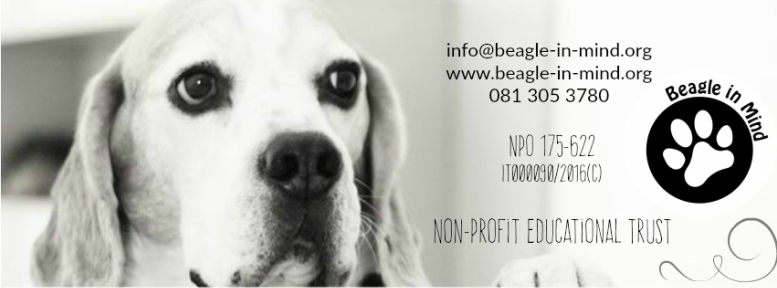
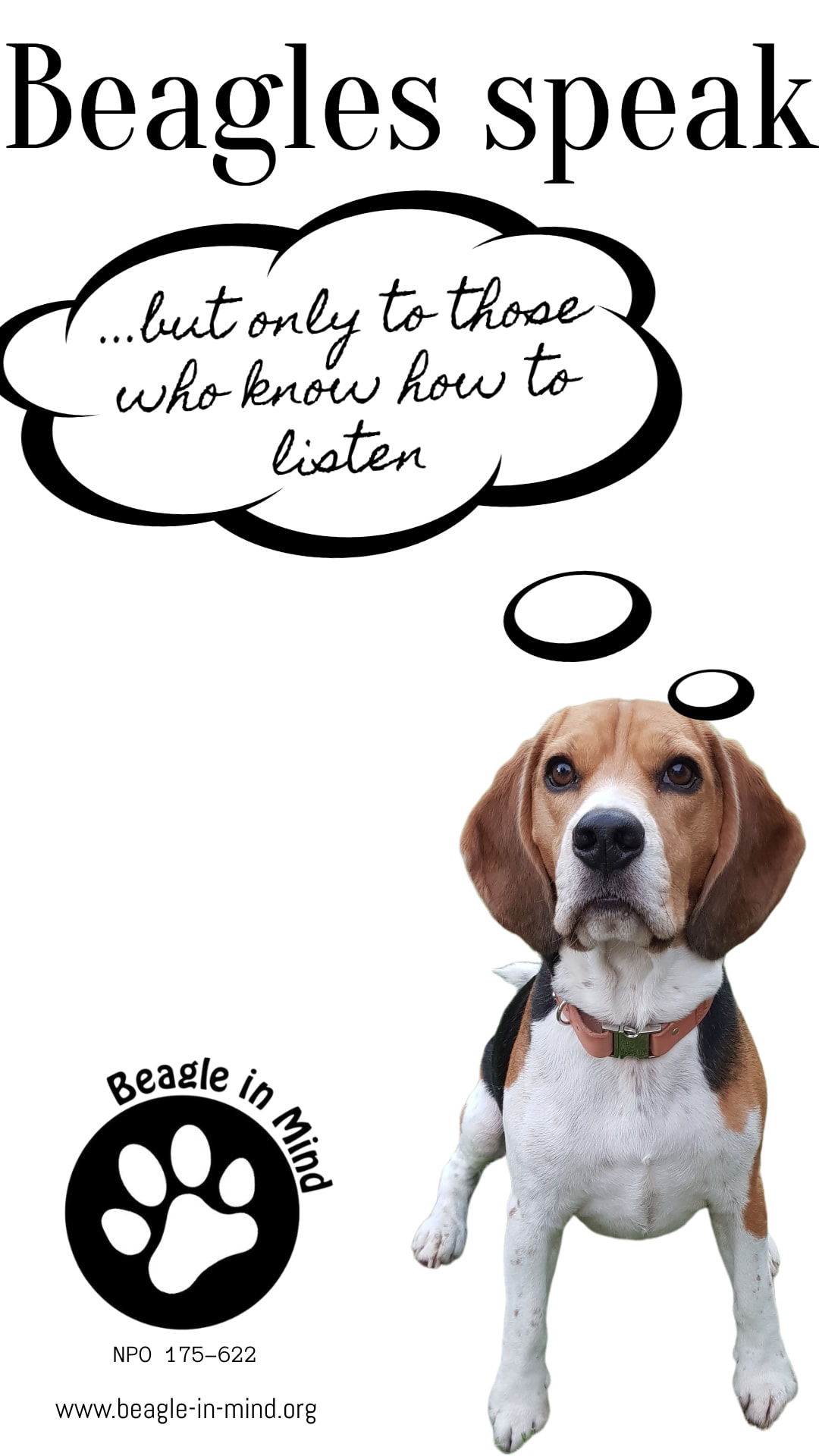
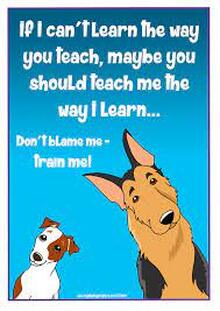


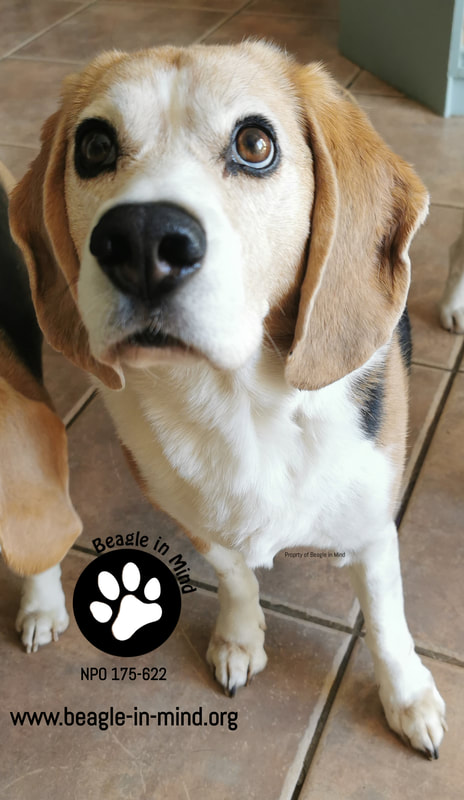
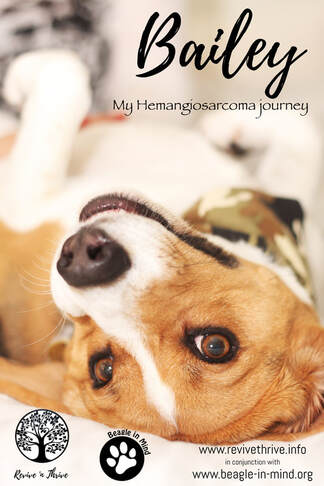

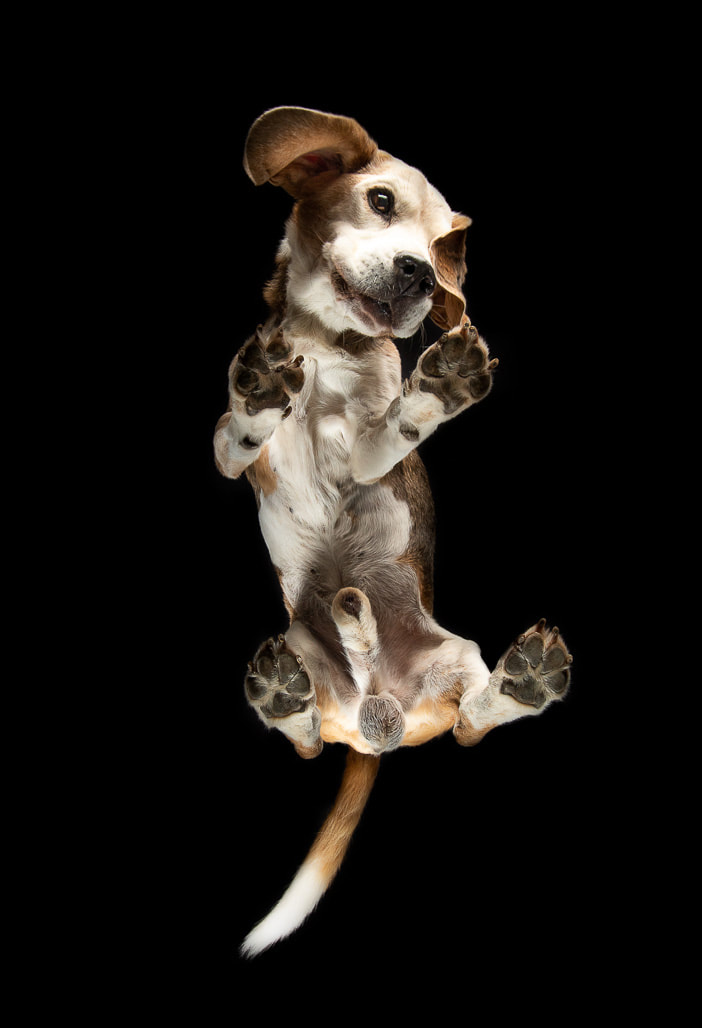

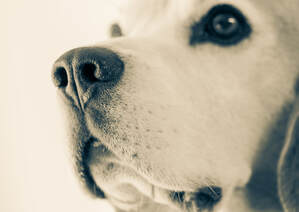
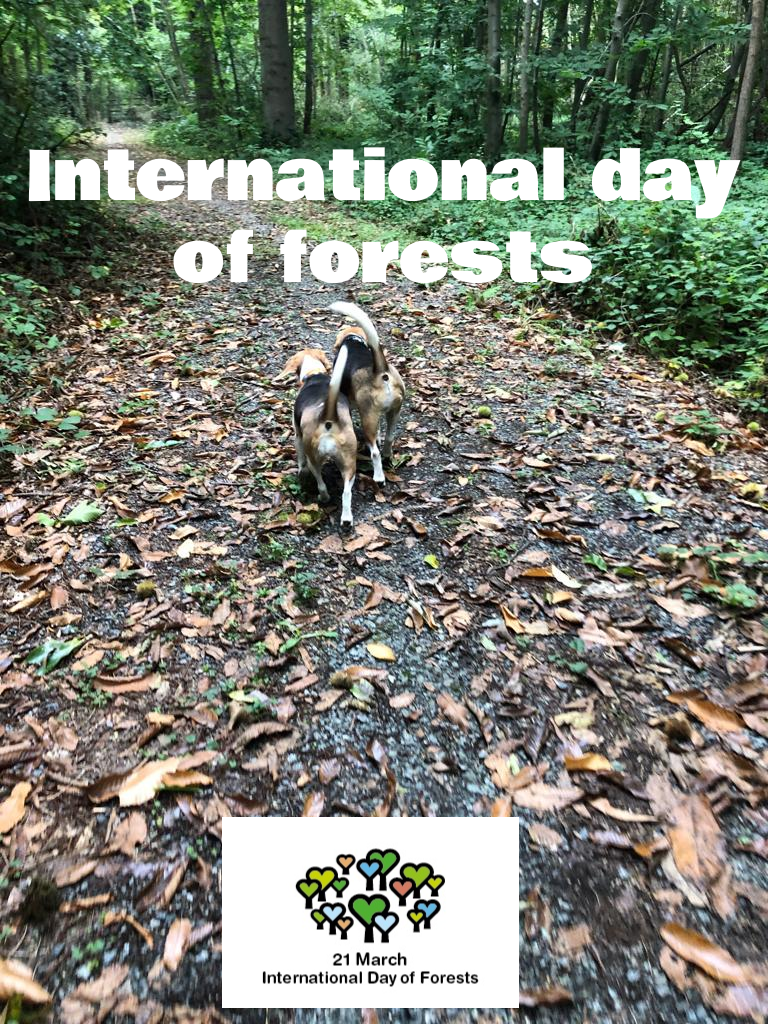

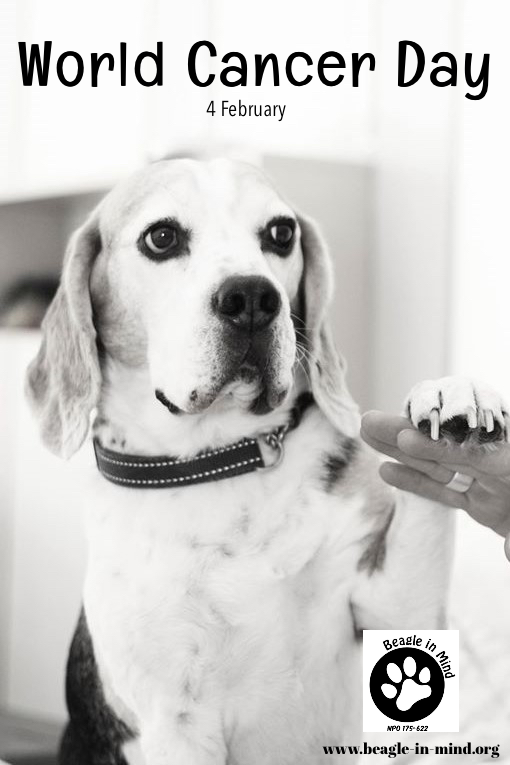





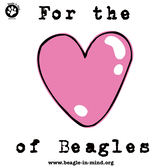


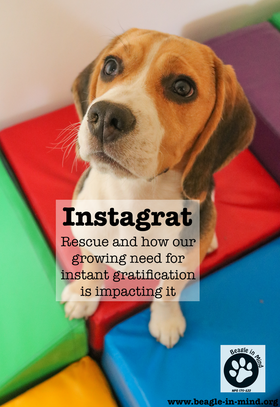
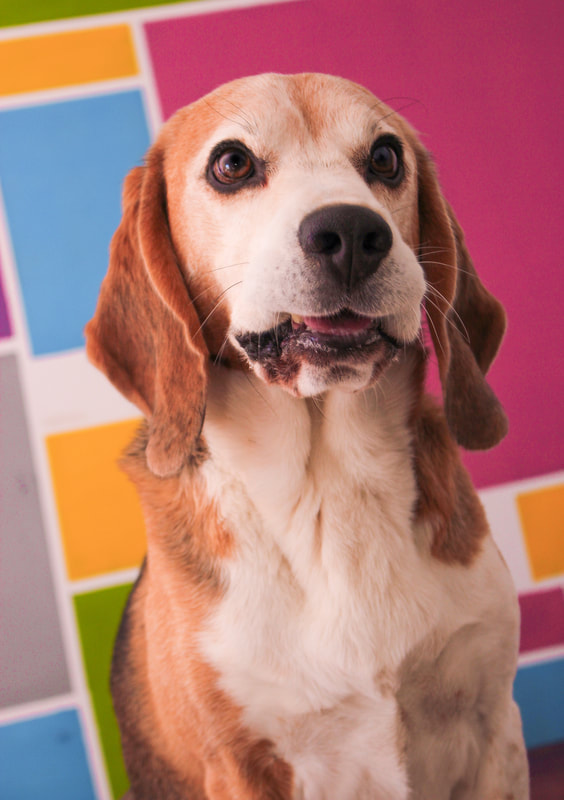


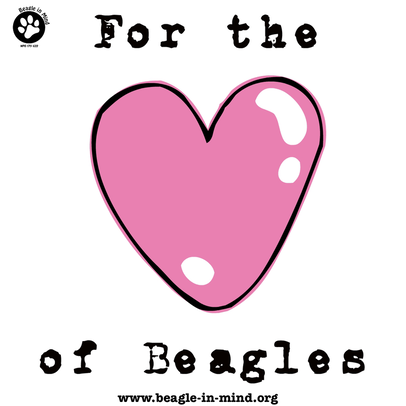
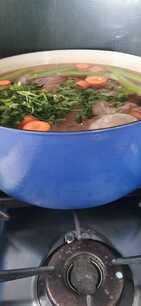
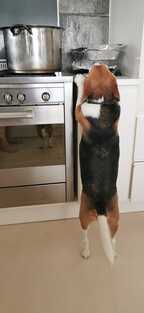
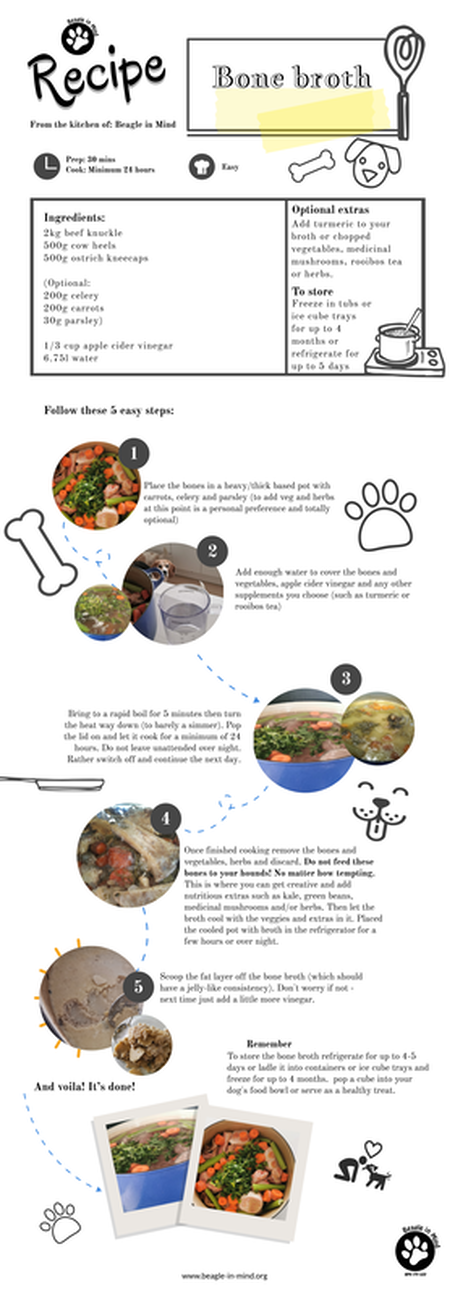

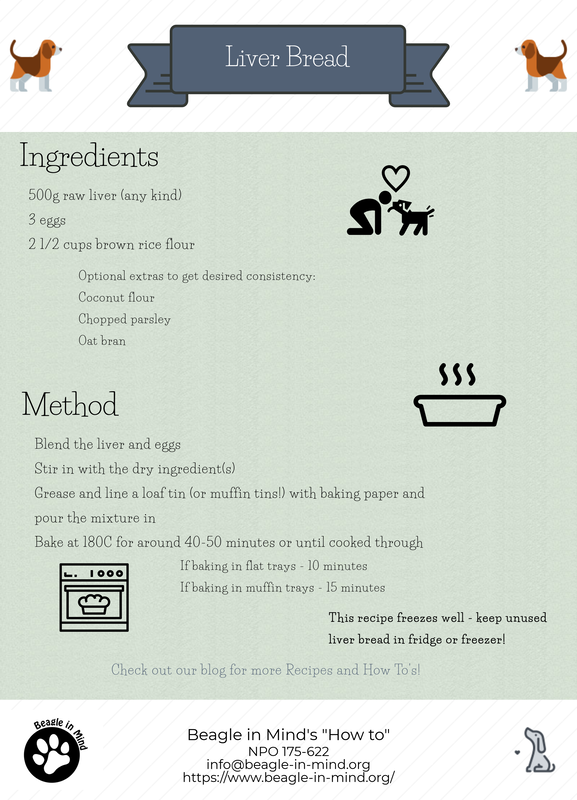

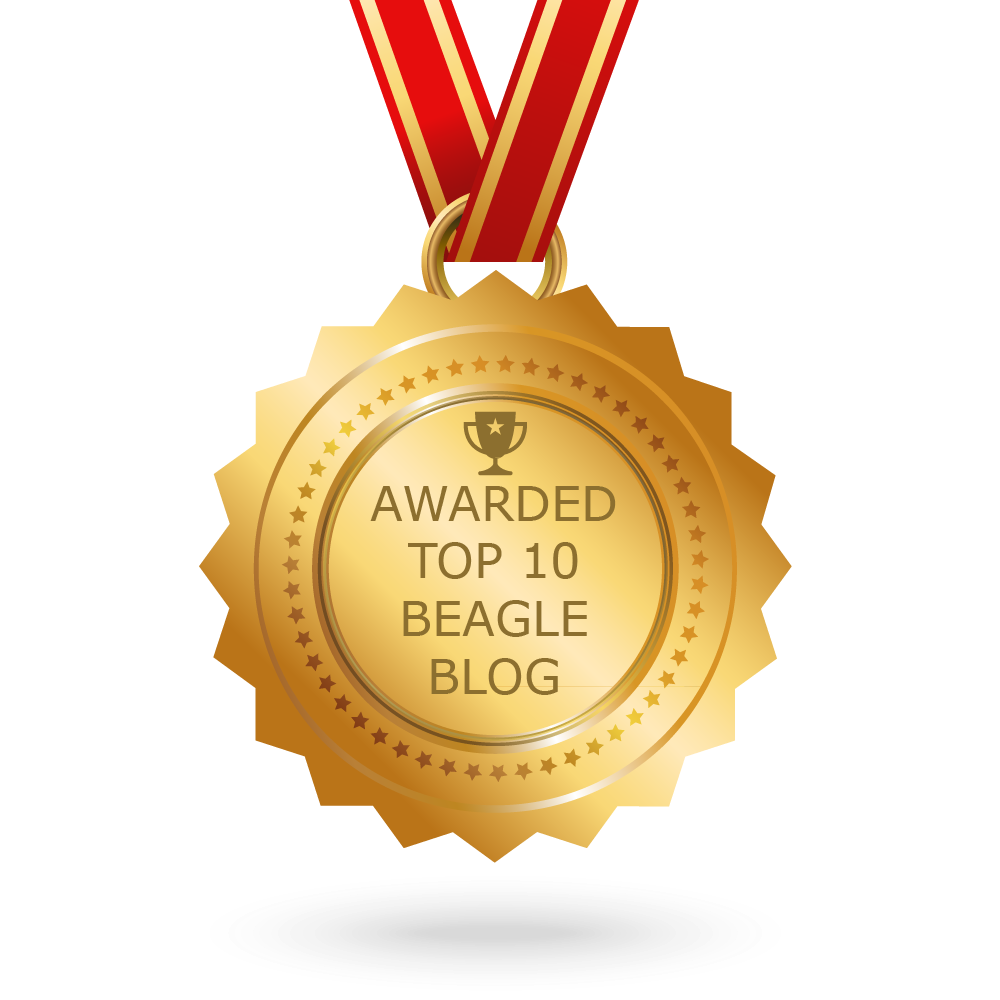



 RSS Feed
RSS Feed